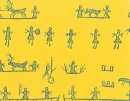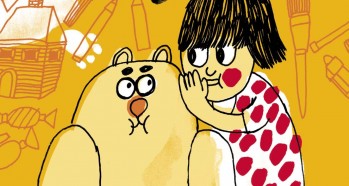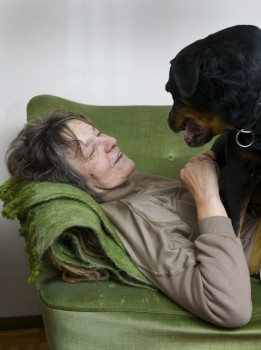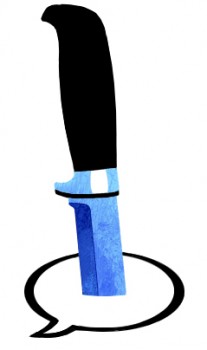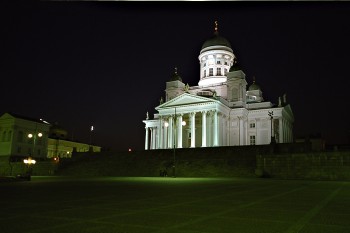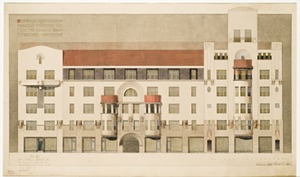Archive for January, 2010
Our favourite things
29 January 2010 | Letter from the Editors
Every reader has his or her favourite book. It is possible to define, with acceptable criteria, when a work of fiction is ‘a good novel’: do the plot, characterisation and language work, does it have anything to say? But when is a ‘good’ novel better than another ‘good’ novel? More…
Morning coffee yoik
29 January 2010 | This 'n' that
The Sámi, or Lapp, people invented yoiking (juoiggus; in Finnish, joiku) aeons ago. Today, this monophonic vocal music, or chanting, is still practised by Sámi artists, among them Wimme Saari (born 1959 in Enontekiö, 300 km north of the Arctic Circle, a son of a reindeer herdsman), who’s brought a new dimension to this ancient art form. More…
Who for? On new books for children and young people
29 January 2010 | Articles, Non-fiction
Books have a tough time in their struggle for the souls of the young: more titles for children and young adults than ever before are published in Finland, all of them trying to find their readers. Päivi Heikkilä-Halttunen picks out some of the best and most innovative reading from among last year’s titles
Nine-year-old Lauha’s only friend and confidant is her teddy bear Muro, because Lauha is an outsider both at home and at school. The children’s novel Minä ja Muro (‘Muro and me’, Otava), which won the 2009 Finlandia Junior Prize, provoked discussion of whether it was appropriate for children, with its oppressive mood and the lack of any bright side brought into the life of the main character in its resolution. More…
Awards for young fiction
29 January 2010 | In the news
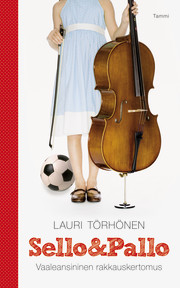 This year’s Topelius Prize has gone to Sello & Pallo. Vaaleansininen rakkauskertomus (‘Cello & Ball: a pale blue love story’, Tammi), a first novel for young people by the scriptwriter and film director Lauri Törhönen. More…
This year’s Topelius Prize has gone to Sello & Pallo. Vaaleansininen rakkauskertomus (‘Cello & Ball: a pale blue love story’, Tammi), a first novel for young people by the scriptwriter and film director Lauri Törhönen. More…
Seita Parkkola: Usva [Mist]
29 January 2010 | Mini reviews, Reviews
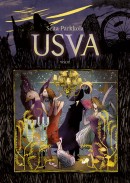 Usva
Usva
[Mist]
Kuvitus: [Ill. by] Jani Ikonen
Helsinki: WSOY, 2009. 375 p.
ISBN 978-951-0-35352-3
19.70 €, hardback
Usva, the 13-year-old protagonist of Seita Parkkola’s novel of the same name, is unusually tall. From her height, she can see farther and more clearly than other people. Usva is a coming of age story in a minor key, its melancholy underlined by Jani Ikonen’s dark black and white illustrations. The images ooze with romantic dereliction, run-down buildings, storm-driven tree limbs, fish on dry land gasping for air. The illustrations are a good example of the visual world brought to life by the success of Japanese manga. Parkkola aptly describes the painful aspects of puberty from the point of view of both the child and the parent. She adds an air of mystification to the age of 13, which she sees as a turning point between childhood and adulthood. The novel can be read as a vision of the near future, of the disintegration of societal support, the increasing fragility of parenthood. Childhood’s end arrives at an ever younger age, and adulthood is entered with a leap, eyes open, without parental support to guide a child into her own adulthood.
Translator at play
28 January 2010 | This 'n' that
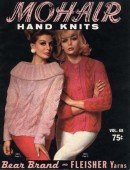 Järjestelmällistämättömyydellänsäkäänköhän?
Järjestelmällistämättömyydellänsäkäänköhän?
This is supposed to be the longest Finnish word. Lola Rogers interprets it as ‘You mean, not even (when it’s done) with their (usual) lack of systematization?’ More…
Mari Kujanpää: Minä ja Muro [Muro and me]
28 January 2010 | Mini reviews, Reviews
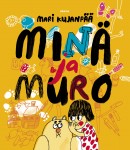 Minä ja Muro
Minä ja Muro
[Muro and me]
Kuvitus [Ill. by]: Aino-Maija Metsola
Helsinki: Otava, 2009. 207 p.
ISBN 978-951-1-23418-0
15.10 €, hardback
The heavy themes of this children’s novel, winner of the 2009 Finlandia Junior Prize, have provoked discussion of who its target audience should be. Lauha is a 9-year-old girl who is considered an oddball at school; her classmates claim that she smells bad. Within her own family she’s an outsider. Her little brother’s serious illness has troubled the family for a long time, and even when he gets better her parents don’t know how to listen to Lauha, and their negligence verges on physical violence. But playing with Muro, her teddy bear, eases Lauha’s troubles, and luckily she finds a soul sister in Heta, the new school intern. Mari Kujanpää (born 1976) uses language suitable for a child’s state of mind in a very creative way. Muro ja minä is difficult for a child to read on his/her own, and would work best read aloud and discussed in a group of children or as a book for adult caregivers. The black and white illustrations are by Aino-Maija Metsola (born 1983), whose previous work includes designing fabrics for Marimekko.
Hamlet in blue velvet
22 January 2010 | Fiction, poetry
Physical, mythical, sensual, playful: Sirkka Turkka’s poems, never abstract, speak of life, death, dogs, horses, nature and humans. In her universe the humorous and the grave socialise without effort. These texts, in prose form, with Hamlet as one of the characters, are often set in a wintry landscape (see Nature girl)
Poems from Yö aukeaa kuin vilja (‘The night opens like corn’, Tammi, 1978)
Of his early childhood, Hamlet really only remembered his father’s slightly crooked and gnarled index finger, pointing at the lowest branch of a holly oak. A small owl sat on it. It can’t see anything, it’s asleep now. It won’t fly off until night. These were the only words Hamlet remembered his father saying to him during the first six years of his life. Later, all he saw of his father was his back, bent over in study of agricultural conditions in a village called Jawohl or of waterside traffic on the river Vistula at the turn of a particular century. When it came to governmental matters, the king placed his trust chiefly in his unconscious and in wheat bread, thick white slices of which he devoured from the moment he awoke. More…
Antti Hyry: Uuni [The stove]
22 January 2010 | Mini reviews, Reviews
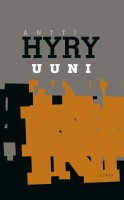 Uuni
Uuni
[The stove]
Helsinki: Otava, 2009. 400 p.
ISBN 978-951-1-23845-4
28 €, hardback
Many authors have inspired imitators, at least for a brief period, but few prove to be so original that they lend their name to an entire stylistic movement. Antti Hyry (born 1931), whose debut work was published in 1958, is a member of this most influential class of writers. His pared-down ‘Hyryesque’ sentences, which convey in a stark, crystal-clear manner only that which his characters think or observe, have been at the core of Finnish modernism for over half a century now. His latest novel, a tranquil, even meditative work, describes in minute detail – virtually brick by brick – how a man constructs a great wood-burning hearth in his house. Alongside the building work, Hyry provides minutely observed details of the natural surroundings and nearby people. Rich in content and brilliant in its simplicity, this novel was awarded the 2009 Finlandia Prize for fiction.
John Simon: Koneen ruhtinas. Pekka Herlinin elämä [The Prince of Kone. The life of Pekka Herlin]
15 January 2010 | Mini reviews, Reviews
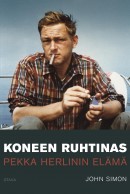 Koneen ruhtinas. Pekka Herlinin elämä
Koneen ruhtinas. Pekka Herlinin elämä
[The Prince of Kone. The life of Pekka Herlin]
Finnish translation of original English manuscript completed by various translators in collaboration with the author
Helsinki: Otava, 2009. 415 p., ill.
ISBN 978-951-1-23478-4
€ 33, hardback
Pekka Herlin (1932–2003) was the long-serving chairman of the board of the Kone lift and escalator company. During Herlin’s tenure, Kone completed a number of corporate acquisitions to become a major global corporation. John Simon, an American writer and researcher, takes an unusually honest and direct approach; the project was undertaken at the request of Antti Herlin, the current chairman of the board at Kone and son of Pekka Herlin. Pekka Herlin was known for being both gregarious and a cool-headed business strategist, but his irascible, unorthodox nature was familiar to many as well. Within his family he emerged as a tyrannical alcoholic with a severely disturbed personality, feared by his children. John Simon interviewed a great many people who knew Pekka Herlin personally, including members of Herlin’s immediate family. This biography was Finland’s best-selling non-fiction book in the autumn of 2009.
We Finns
15 January 2010 | Columns, Tales of a journalist
Is it so bad to criticise a Finn, if you’re a Finn? Columnist Jyrki Lehtola takes another look at what you think about us Finns out there
Recently, the word ’Finland’ has been repeated in Finland, and generalisations made about what we Finns are like.
Last year saw the seventieth anniversary of the Winter War, and we congratulated ourselves on what a fine fighting nation we are.
A government branding work group tells us at regular intervals how creative a nation we are.
From time to time someone remembers to mention the sauna, while someone else is a little more critical and says we are also an envious nation. More…
Beating the winter blues
8 January 2010 | This 'n' that
We’ve passed the solstice, so in principle the days are getting longer; but as we drag ourselves back into the office after the holidays, the mornings and evenings still seem pretty gloomy. We’re not complaining; further north, as the radio weather forecast reminds us daily, it’s even darker. Here, sunrise is after nine and sunset before four; further north, in Utsjoki, right up in the Arctic, it set in late November and won’t rise again until 16 January.
Still, even here, any glimmer of light is welcome. All over the city, at this time of year, SADS cafes spring up, with high-intensity light sources to combat seasonal affective disorder or, as we call it in the vernacular, the winter blues. The effect, especially after a couple of hours spent in an editorial board meeting, can be electrifying. More…
Architecture update
7 January 2010 | In the news
Finland’s really strong suits in terms of culture, it could be argued (although not by us!), are not so much literature as architecture and music. Enter a new website designed for those in search of information on both news and the history of Finnish architecture and its makers, on the built environment, policies, research and organisations. More…
Johanna Holmström: Camera Obscura
6 January 2010 | Mini reviews, Reviews
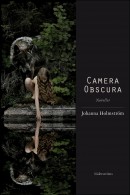 Camera Obscura
Camera Obscura
Helsinki: Söderströms, 2009, 334 p.
ISBN 978-951-52-2616-7
€ 24,90, hardback
This short story collection is Johanna Holmström’s fourth book since her debut in 2003. Camera Obscura is a fabric of narratives and personal destinies which create a dense, novel-like whole. The preamble is a young environmental activist’s suicide. The form is interwoven with the content, so that the stories in the book can be read as separate narratives, but to understand them fully we must read them all. Each person’s destiny is shaped in part by the choices and actions of others; to what extent is the individual responsible for the whole? Holmström (born 1981) writes fiction that is unpredictable but stylistically assured. She seamlessly weaves with classic fairytale motifs and also has a keen eye for detail and psychology. Camera Obscura is at once eerie, suspense-filled and socially aware.

